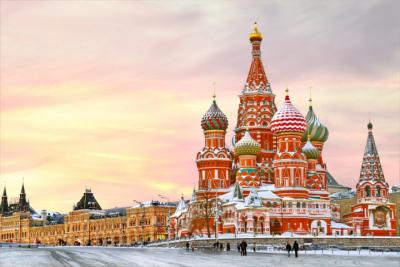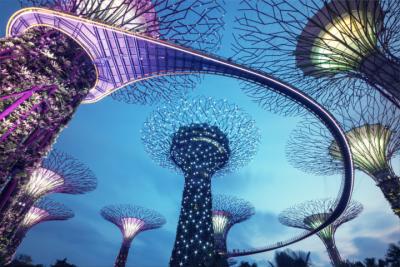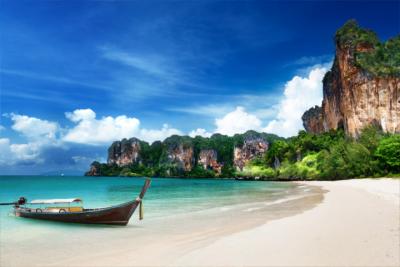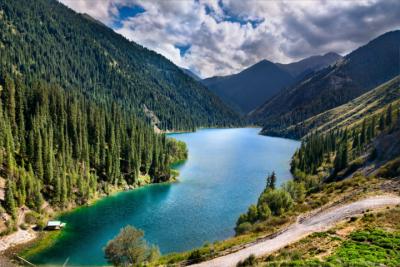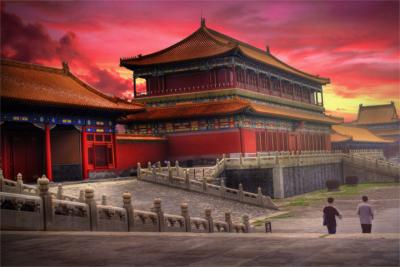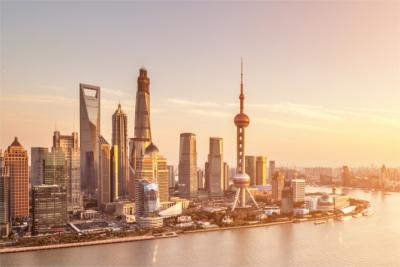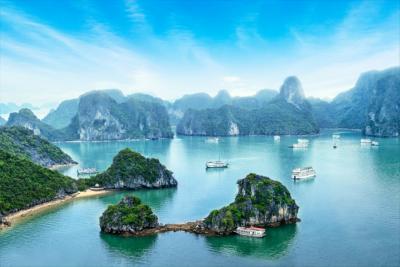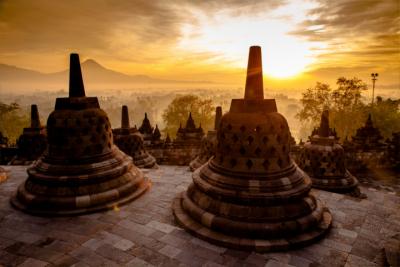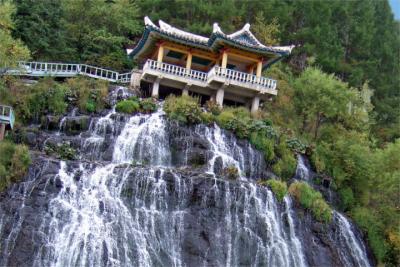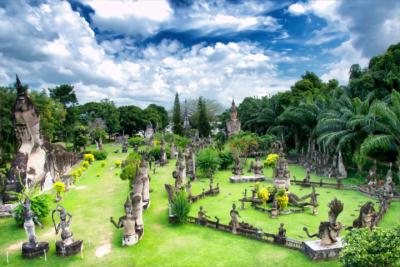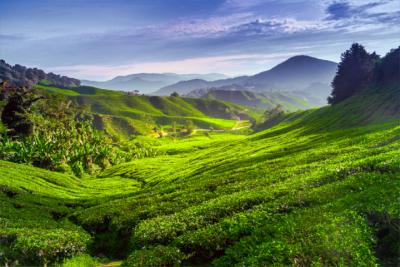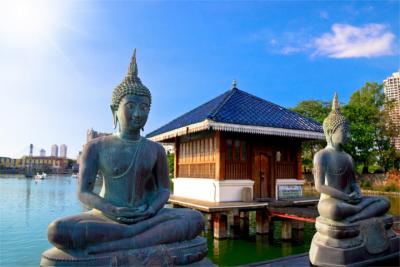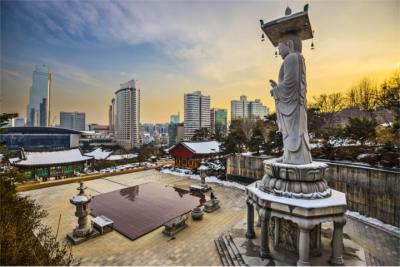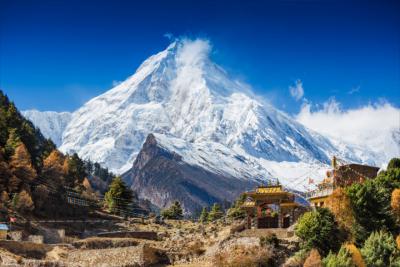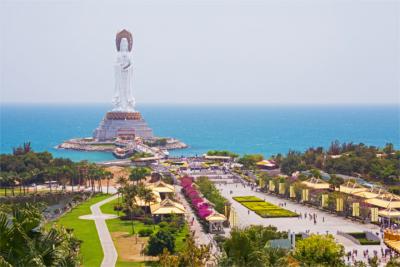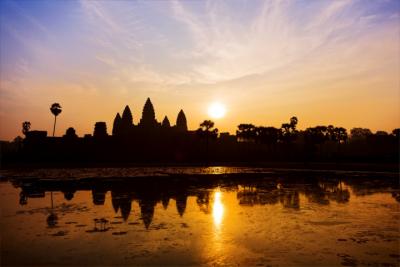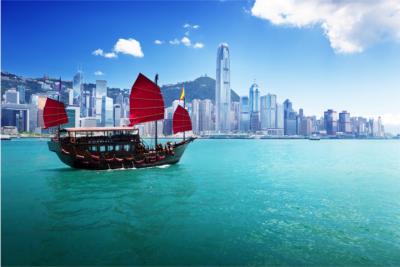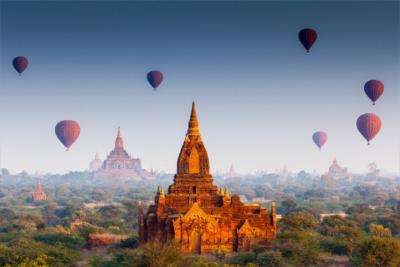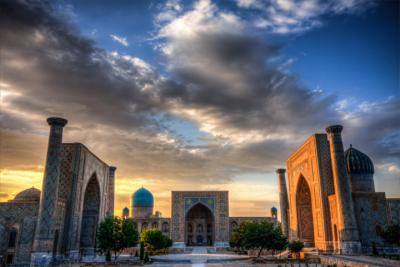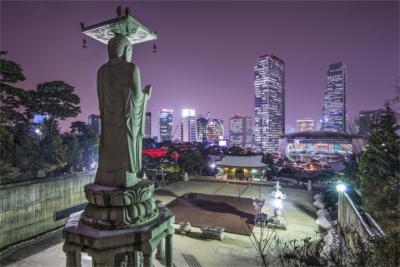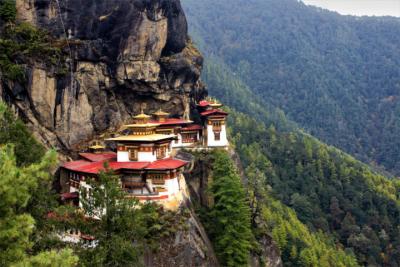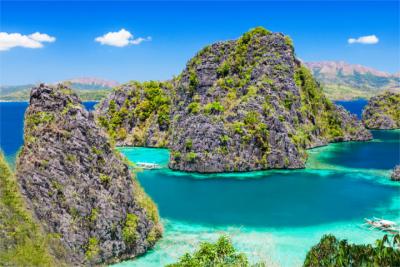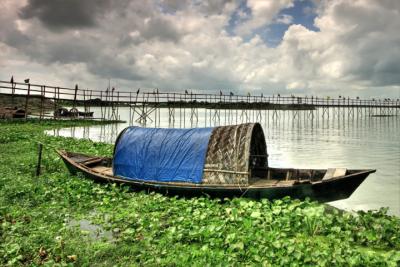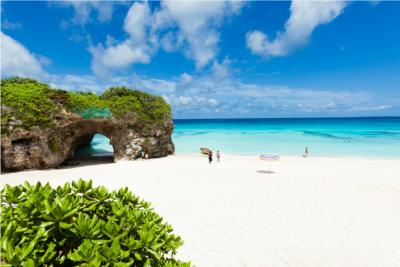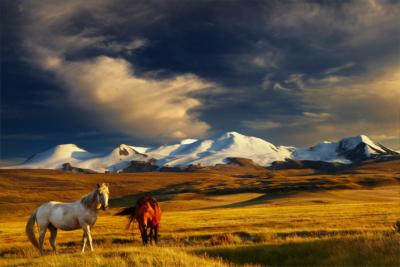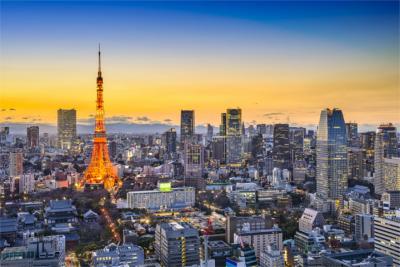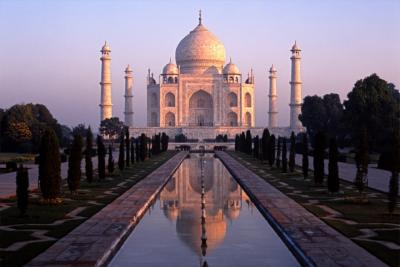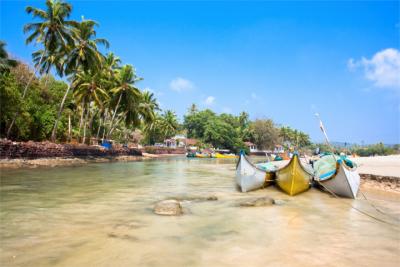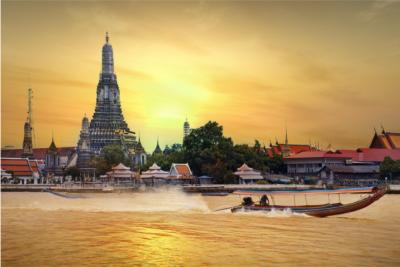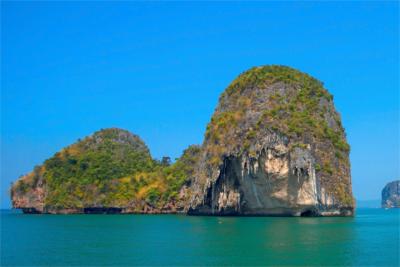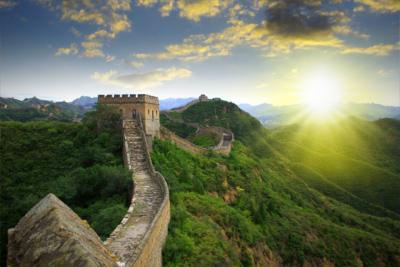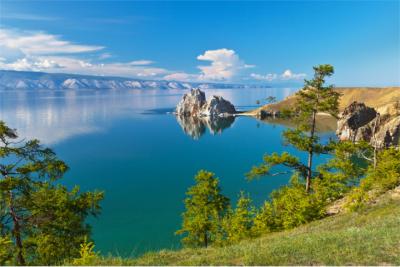Travel Offers
Travelmyne Featureprint
Distance
Hong Kong - Modernity and Tradition
Hong Kong is a city which subsists on its giant skyscrapers, their glamour and globalisation. In addition, cultural and religious elements characterise the way of living in the metropolis, which uniquely combines modernity with the traditional values of bygone cultures.
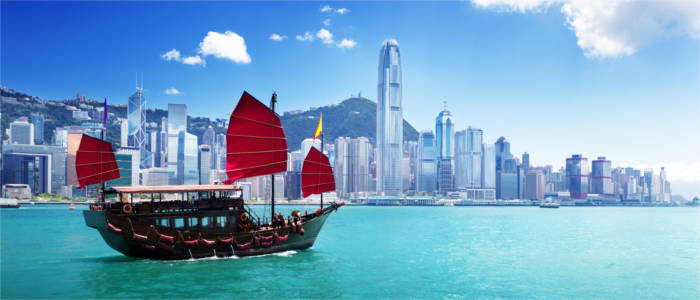
Geography - The world city at the Pearl River
Hong Kong is a metropolis and a Special Administrative Region in the People's Republic of China. The big city lies at the country's south coast at the mouth of the Pearl River in the South China Sea and comprises an unevenly shaped peninsula as well as 263 islands. The most important islands are Lantau Island, Hong Kong Island, Lamma Island, Tsing Yi, Cheung Chau and Peng Chau. Over 7 million people live in the city, which has an area of 1,104 km², 25 percent of which are developed. This results in a population density of 16,000 inhabitants per km² and makes Hong Kong one of the most densely populated regions on earth. The climate in the metropolis is tropical and humid with cool, dry winters (January to March) and hot, rainy summers (April to September).
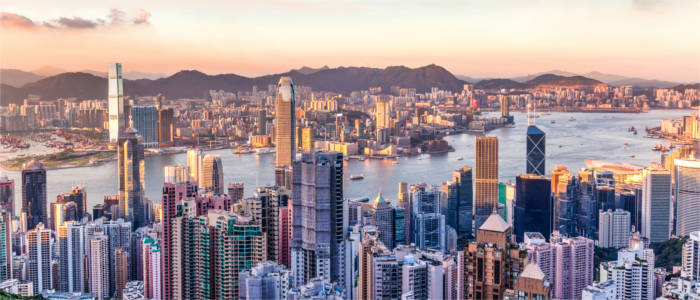
Nature - One of the greenest Asian metropolises
Most people think of skyscrapers, crowds of people and vibrant city life when they hear the name "Hong Kong". There are not many people who know that Hong Kong is one of the greenest Asian metropolises and that almost 40 percent of its area are nature reserves. This is partly due to the mountainous and steep landscapes which cannot be developed. Instead, it is decorated with a unique flora and fauna. Forested and grass-covered hills, wonderful beaches, wetlands and cliffs are home to Asian migrating birds, deer, porcupines, civets, numerous butterfly species and subtropical plants such as orchids and ferns.

Natural sights - A wetland biotope and Victoria Peak
Hong Kong offers a great number of impressive natural sights. The Hong Kong Wetland Park is a marshy nature reserve, which displays great diversity although it is man-made. On over 60 hectares, visitors can marvel at the subtropical flora and fauna and understand how the region must have looked before the development of the city of Hong Kong. Another popular natural attraction is Victoria Peak on Hong Kong Island. Many travellers climb the mountain, which is 552 metres high, because of the breathtaking view. Although there is a footpath to its top, many visitors prefer taking the Peak Tram. Once you have reached the top, you are rewarded with an extraordinary view of the whole city as well as the surrounding hills and beaches. Holidaymakers also have a panoramic view from Victoria Harbour between Hong Kong Island and Kowloon Peninsula.
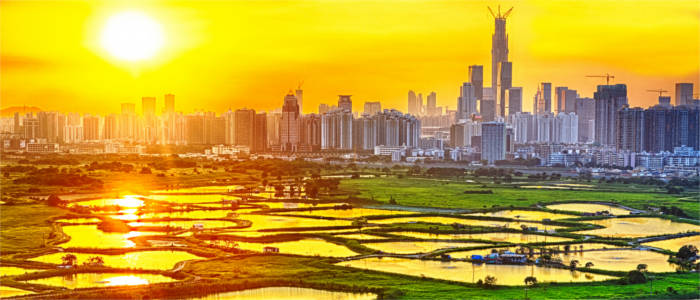
Culture - The cultural centre and a melting pot of religions
Several religions from different cultures meet in Hong Kong. The greatest religious community is constituted by the Buddhists, followed by the Taoists. Taoism is a common religion, philosophy and attitude to live in Hong Kong. Due to the British occupation, Christianity exists in Hong Kong too. Including the Islam, you find Asian, European and Middle Eastern influences in the metropolis and although many of Hong Kong's inhabitants are not members of any religion, religious customs are an inherent part of everyday life. Many people in Hong Kong visit a temple regularly and decorate their flat or office with a Buddhist shrine. In addition, many metropolitans go to see fortune tellers, which often work in temples. Hong Kong's culture fascinates with its cinema tradition and music scene but its museums are worth visiting as well. Examples of the latter are the Hong Kong Museum of Art, the Hong Kong Museum of History and the Hong Kong Science Museum, while the world of cinema offers kung fu and gangster films as well as romantic comedies and Cantonese dramas. Despite the different genres, they all symbolise the awareness of life in the Asian city. You see a kind of Asian Walk of Fame at Victoria Harbour. Hand prints, stars and statues are dedicated to celebrities such as Bruce Lee and Jackie Chan as well as to special film themes. Another cultural testimony of the metropolis is Cantopop (pop music sung in Cantonese dialect), which is popular in the whole of China.
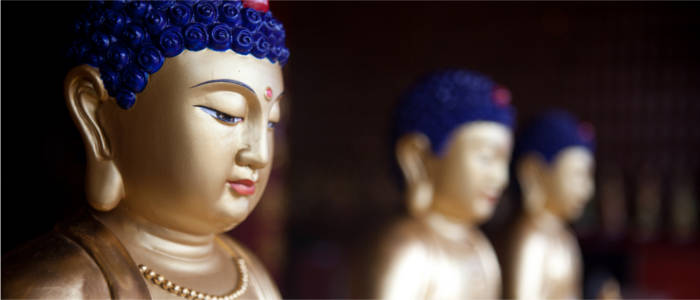
Cultural sights - Religious temples and monasteries
Since many religions are practised in Hong Kong, the city is full of religious temples and sites. One of the city's most frequently visited and famous temples is Man Mo Temple on Hong Kong Island. The Taoist site was built in the 19th century and is one of the oldest temples in the city. Wong Tai Sin Temple is another popular temple in Hong Kong. A Buddhist site is Po Lin Monastery on Lantau Island, which accommodates the world's greatest sitting Buddha statue (Tian Tan Buddha, 34 m high and 250 tons heavy). It is considered one of the most important Buddhist monasteries and consists of several halls and temples. There are 268 steps leading up to the statue of Tian Tan Buddha. The adjacent plateau offers a wonderful view of the surroundings. With a bit of luck and good visibility, you might be able to see as far as Macau. Another Buddhist building is the Ten Thousand Buddhas Monastery, whose walls are decorated with over 10,000 Buddha statues.

Experience - A vibrant shopping and party oasis
The metropolis of Hong Kong is a real shopping paradise. Both great shopping centres and numerous speciality markets offer opportunities of spending money on unique products. The Ladies' Market in Mong Kok offers everything women could want, while the Flower Market sells many types of plants and seeds to amateur botanists. Animal lovers get their money's worth on the Bird and Goldfish Market. Singing birds and goldfish are popular pets in Hong Kong because the breeding of these animals has a long traditionand as symbolic character here. Other popular shopping facilities are the Jade Market and the Night Market in Temple Street. Several traditional and cultural festivals take place in Hong Kong throughout the year. Traditional Chinese celebrations are the Chinese New Year, the Lantern Festival and the Dragonboat and Moon Festival. Examples of cultural events, on the other hand, are the Hong Kong Arts Festival or the Hong Kong Food Festival. Hong Kong's nightlife is characterised by a great variety of bars, discos, clubs and restaurants. You see both western-oriented locations and typically Asian places such as karaoke bars. One special event of the nightly spectacle is the laser show of the Symphony of Lights. The elaborate light show is listed as the greatest permanent light and sound show in the Guinness Book of World Records and takes place on the Avenue of Stars every night.
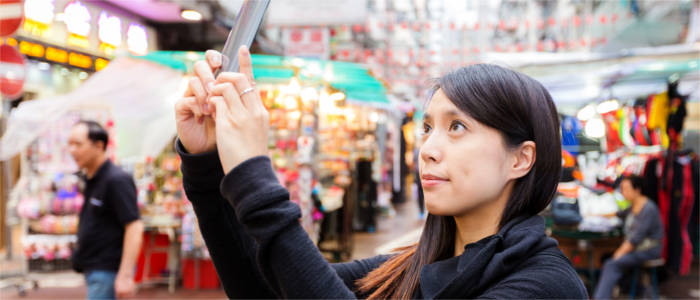
Activities - Hiking on the Hong Kong Trail and riding roller coasters in the Ocean Park
Hong Kong offers excellent conditions for hikers with its varied hilly landscape. Hiking trails such as the MacLehose Trail or the Hong Kong Trail, which is 50 kilometres long, lead visitors through the beautiful green nature of the city's surroundings. Victoria Peak is another natural attraction which invites travellers to go on a hike. A kind of circular route, which takes 40 to 60 minutes, leads holidaymakers around the well-known mountain to its top and a viewing platform. Another popular leisure time experience is a visit to the Ocean Park on Hong Kong Island, which accommodates a giant aquarium, a dolphin show, roller coasters, panda bears, penguins and other attractions. The amusement park is divided into the Lowland and the Headland, which are connected with a cable car of 1.5 kilometres of length. Hong Kong Disneyland on Lantau Island is another popular tourist attraction.

Information
Most of the bigger airlines fly to Hong Kong. The city's airport is located outside of the city centre on Lantau Island. A great bridge connects both districts with each other. Within the city, you can use the tram, which is almost 100 years old, or the underground. Another popular and inexpensive means of transport is the taxi. It needs to be mentioned that many taxis are only allowed to drive in certain districts (e.g. red taxis on Hong Kong Island, blue taxis on Lantau). You can pay for many of these means of transport (tram, bus, underground, ship, peak tram) with the Octopus Card, which you can buy at the airport, for example.
The metropolis of Hong Kong caters for all tastes. Whether you are a lover of nature, a culture enthusiast or a party and shopping fan, you will get your money's worth here. The Asian city manages to successfully combine the traditions of the past with the trends of modernity.

